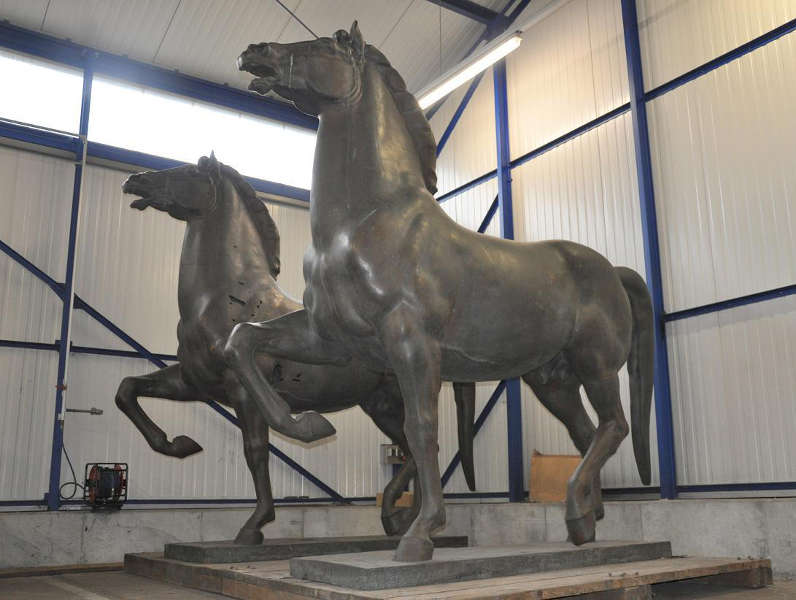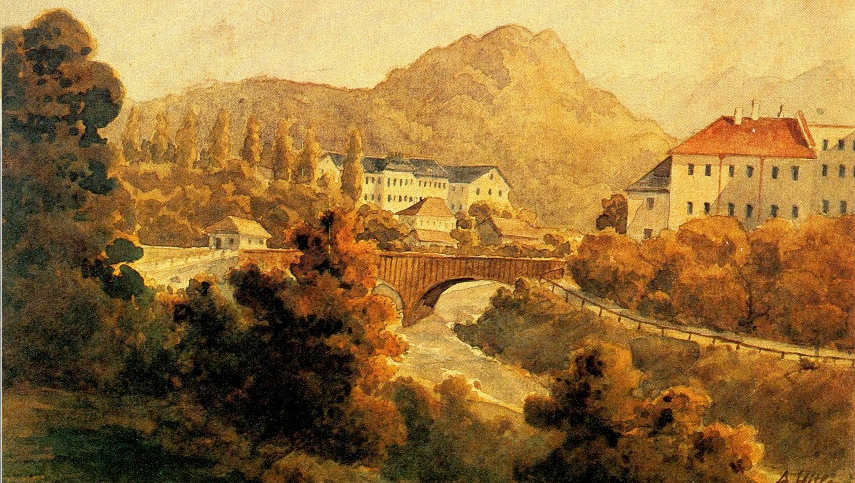Where is Hitler Art ? What did the Nazi Dictator Commission and What did he Paint?
So, would you buy a Nazi artwork? Say, you have a huge amount of money, and you just can't manage to spend it even if you live for another hundred years. Would you buy some larger-than-life-sized Nazi sculpture that was in the 30's and 40's used for propaganda purposes, brainwashed ordinary folks in order to think that it is perfectly OK to wipe millions of people off of the planet? Or, perhaps, would you buy a painting created by non other than Adolf Hitler, the mastermind behind the greatest evil this world has ever seen? In my book, this is not a question of art, at all. It's a question of morality. Sadly, Fascism and Nazism are emerging their ugly heads higher and higher - again, and they should be stopped at any cost - again. This also means that everyone that has sympathies for any aspect of Nazism should be stopped as well, which goes for Nazi art or Hitler's paintings, as well. You see, the basic characteristic of Nazi art is not that it's art, but that it's Nazistic.

Art That Promoted Killing of 17 Million People
In Germany most things related to Nazism, such as swastikas, are forbidden and banned, and they should be. Some things are allowed, like uniforms and literature, but only under strict rules and special circumstances, since they have historical or documentary importance. And how about Nazi commissioned artworks? How about artworks ordered by Hitler himself? Finally, what about Hitler's personal paintings? Well, those kinds of artworks are legal to be bought and sold in Germany, but only if it is proven that they were not looted or stolen. So, Hitler's paintings are ok. Yet, there is a black market both for Nazi art and for Nazi accessories in Germany, deeply hidden, because you might get in trouble if someone finds out that you love symbols on whose behalf 17 million people were killed. But, for instance, in the United States these things are not forbidden. Other countries that have individuals interested in Nazi art are Spain and Italy, which both had their own fascist past, but countries from South America as well, since many Nazis escaped through so called "rat channels". One could argue about whether all these collectors are keen on Nazism, but we would certainly be wrong if we stated only this. After all, there are historians and researchers that are only professionally interested. However, it could be also argued that the vast majority of them are simply Nazis and are afraid to show that publicly, right?

Hitler Art
Hitler was a failed artist himself. He was rejected twice by the Academy of Fine Arts in Vienna, in 1907 and 1908 - professors told him that he was more talented for architecture than for painting. If we look at his paintings, we could see why - there are practically no human being in his paintings, only buildings and nature. Hitler did not invent some new exciting style in painting, as he rather used artworks from Greco-Roman classicism, the Italian Renaissance, and Neo-Classicism for his inspiration. He continued to pursue an artistic career: he made a lot of paintings and postcards and sold them in Vienna's pubs for a living, but he was simply not good enough to have a breakthrough as an artist, unfortunately for millions of people in the next few decades. Even in 1939, just before the World War II broke out, it was reported that Hitler told British ambassador that he wanted to end his career as a politician: "I am an artist and not a politician. Once the Polish question is settled, I want to end my life as an artist".

Irreplaceable Artist of the Third Reich
Yet, Hitler and other high-ranked Nazis, knew the value of art and architecture when used as propaganda material. Characteristic visual artworks were favored in the Third Reich: larger-than-life-sized sculptures of healthy, strong, muscular men were typical for the Nazi regime, in order to highlight the racial and cultural superiority of the German people, and of the Arian race. Nazis had a group of regime's favorite artists that were used as a sort of state-sponsored artists - they were called "Unersetzliche Künstler", or irreplaceable artists, and they had heavy commissions by the Nazi state all throughout the 1930s and during the war. Who were these artists? There were composers, writers, poets, painters, musicians, architects, and the most important sculptors of Nazi regime were Arno Breker (also called "Reich Culture Senator"), Fritz Klimsch, Georg Kolbe and Josef Thorak (also known as "State sculptor"). These artists, especially Thorak and Breker, had an incredible amount of commissions, accompanied with fame and wealth. For instance, many Nazi landmarks were made by these two sculptors, but the biggest was yet to come: Hitler had a monumental and megalomaniac plan to transform Berlin into Germania - the capital of the Third Reich after the Nazis win the World War II. The main architect of this plan was Albert Speer, the "first architect of the Third Reich", and it was planned that the new Germania would have monumental reliefs and sculptures - that's where Breker and Thorak have stepped forward. Thorak also had many works commissioned for other Nazi landmarks, such as Olympic stadium in Berlin (where Olympic games took place in 1936), or for Nuremberg Party rally grounds. However, most of their art was destroyed during the bombing in World War II, and other artworks, that have survived, have mysteriously disappeared during the post-war chaos in Germany.

Black Market for Nazi and Hitler's Art
Earlier in 2015, German police conducted raids on 10 locations in Germany, and they had a great catch: at least nine sculptures that have been made by the most important Nazi artists were captured in German town Bad Dürkheim. Among them, there were three gigantic granite reliefs, work by Breker, that was planned for the triumphal arch in Germania, as well as two statues by Fritz Klimsch. There were also two horses that were part of the Reich Chancellery, and that were made by Josef Thorak. According to the police, these sculptures were meant to be sold on the black market for almost $9 million. German police had said that these sculptures have disappeared after the fall of the Berlin Wall and the withdrawal of the Soviet forces from East Germany, and another source has claimed that these sculptures were reportedly "turned into scrap metal", because "they were from the era of Hitler's Germany". However, it is obvious that all of those "scrap metal sculptures" couldn't have been sold any other way than on the black market - even if the galleries and museums in Germany would have accepted to exhibit them (which they avoid at all costs), all sculptures were commissioned by the state, and therefore, they are the property of the federal government. Total of eight German men - old men, since they are aged from 64 to 79 - are under investigation on suspicion of handling stolen goods. We're hoping that, if their guilt is proved, the part of their sentence will go to the account of deterring anyone else from dealing with this kinds of "artworks".
Editors’ Tip: Hermann Goring and the Nazi Art Collection: The Looting of Europe's Art Treasures and Their Dispersal After World War II
However, it’s not only about Hitler. Whole Nazi system worked on organized massive art theft. Before and during World War II, the Nazis plundered from occupied countries millions of works of incalculable value estimated in the hundreds of millions of dollars. Spearheaded by Hermann Goring, Reichsmarschall of the Third Reich, the looting program quickly created the largest private art collection in the world, exceeding the collections amassed by the Metropolitan in New York, the British Museum in London, the Louvre in Paris and the Tretiakov Gallery in Moscow. By the end of the war, the Nazis had stolen roughly one-fifth of the entire art treasures of the world.
Can We Help?
Have a question or a technical issue? Want to learn more about our services to art dealers? Let us know and you'll hear from us within the next 24 hours.

